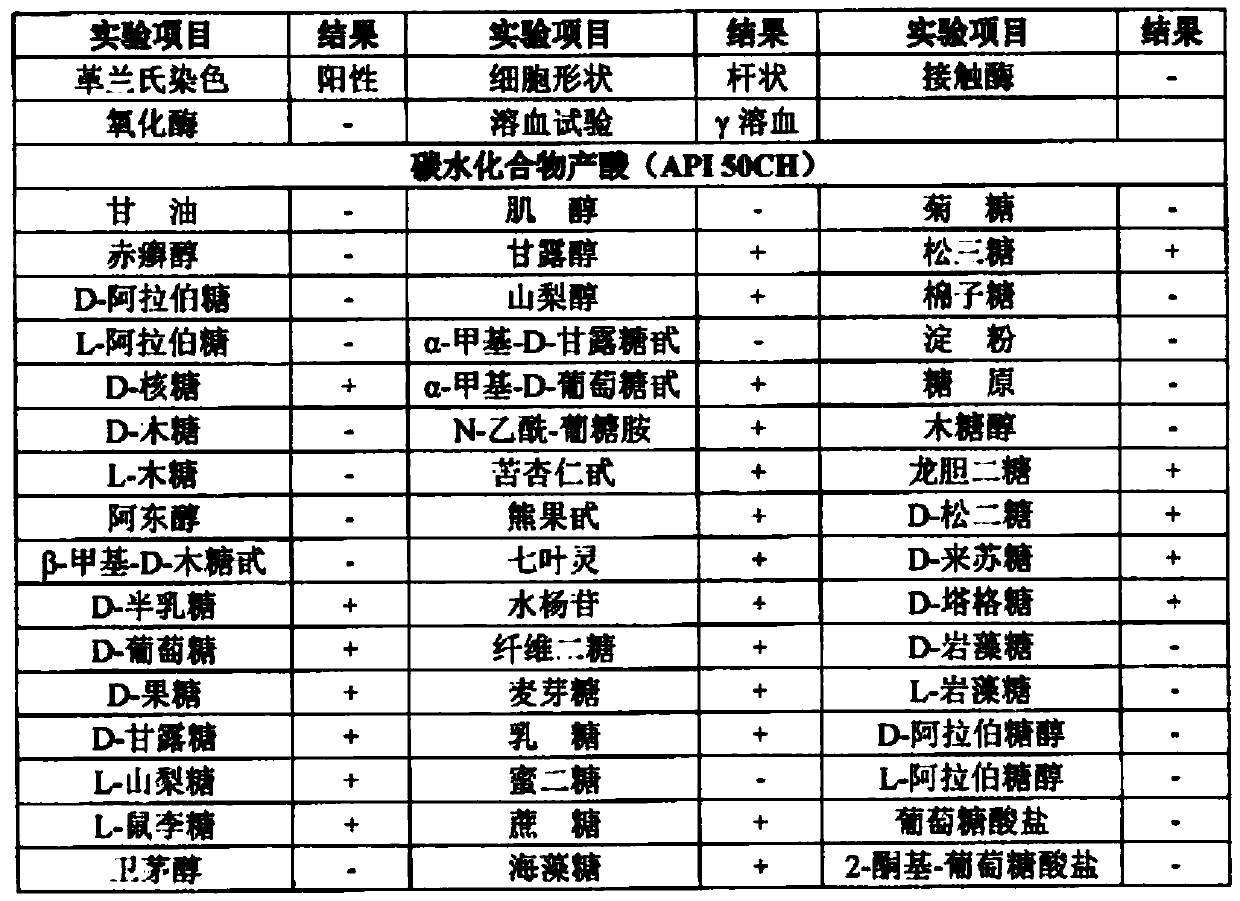Application of lactobacillus rhamnosus and compound bacterial powder thereof in products for preventing and treating vaginitis
A technology of Lactobacillus rhamnosus and compound bacteria powder, applied in the direction of Lactobacillus, application, function of food ingredients, etc., can solve the problem of easy recurrence, no recovery of vaginal pH value and quantity and quality of lactobacilli in the vagina, and no real recovery of the vagina. Micro-ecological environment and other problems, to achieve the effect of resisting growth and reproduction and maintaining health
- Summary
- Abstract
- Description
- Claims
- Application Information
AI Technical Summary
Problems solved by technology
Method used
Image
Examples
Embodiment 1
[0026] Example 1 Isolation and Identification of Lactobacillus rhamnosus LR519
[0027] (1) Strain isolation
[0028] The milk fan (collected from the farmer's home in Jianchuan County, Dali, Yunnan Province) was taken, washed with sterile saline, inserted into skimmed milk with a mass percentage of 12%, and incubated at room temperature until curdling. Take 1 mL of curdled skim milk, dilute it with 9 mL of sterile saline, spread it on MRS solid medium, and incubate at 37°C for 72 hours. Select an MRS plate with a single colony, pick colonies with different sizes, colors, and states, and carry out Gram staining, insert Gram-positive bacilli into MRS liquid medium, and culture at 37°C until turbid. Stretch and separate the bacterial liquid in the MRS solid medium, and repeat this more than 3 times to obtain bacterial colonies and bacterial strains with the same morphology, and store them.
[0029] (2) Strain identification
[0030] The colony was milky white, raised, with ne...
Embodiment 2
[0033] Example 2 Hemolytic test and strain stability evaluation of Lactobacillus rhamnosus LR519
[0034] The results of the hemolysis test showed that Lactobacillus rhamnosus LR519 had no hemolysis, that is, γ hemolysis. The strain stability test showed that after continuous subculture and comparative experiments, no visible changes were found in the strain's morphological characteristics, physical and chemical characteristics, and antibiotic sensitivity, which indicated that the strain's traits could be inherited stably.
Embodiment 3
[0035] Example 3 Lactobacillus rhamnosus LR519 and Lactobacillus plantarum LP45 antibacterial ability test
[0036] (1) Inhibitory ability test to Escherichia coli and Staphylococcus aureus
[0037] (1) Test method
[0038] ① Lactobacillus rhamnosus LR519 and Lactobacillus plantarum LP45 were activated by cryopreservation tubes, respectively inoculated in liquid MRS medium to activate for 3 generations, and the activated lactic acid bacteria were inoculated into liquid MRS medium at 3% inoculum, and kept at 37°C Cultivate for 24 hours, centrifuge the lactic acid bacteria fermentation liquid at 8000 rpm / min for 10 minutes to collect the fermentation supernatant, and use a bacterial filter to filter and sterilize the supernatant for later use;
[0039] ②Pour 10mL of 2.0% plain agar medium cooled to 50℃ into a sterile plate and dry it in a clean bench;
[0040] ③Put the sterilized Oxford cup on the plain agar medium and let it stand for 10 minutes;
[0041] ④Add 1mL cultured E...
PUM
 Login to View More
Login to View More Abstract
Description
Claims
Application Information
 Login to View More
Login to View More - R&D
- Intellectual Property
- Life Sciences
- Materials
- Tech Scout
- Unparalleled Data Quality
- Higher Quality Content
- 60% Fewer Hallucinations
Browse by: Latest US Patents, China's latest patents, Technical Efficacy Thesaurus, Application Domain, Technology Topic, Popular Technical Reports.
© 2025 PatSnap. All rights reserved.Legal|Privacy policy|Modern Slavery Act Transparency Statement|Sitemap|About US| Contact US: help@patsnap.com



